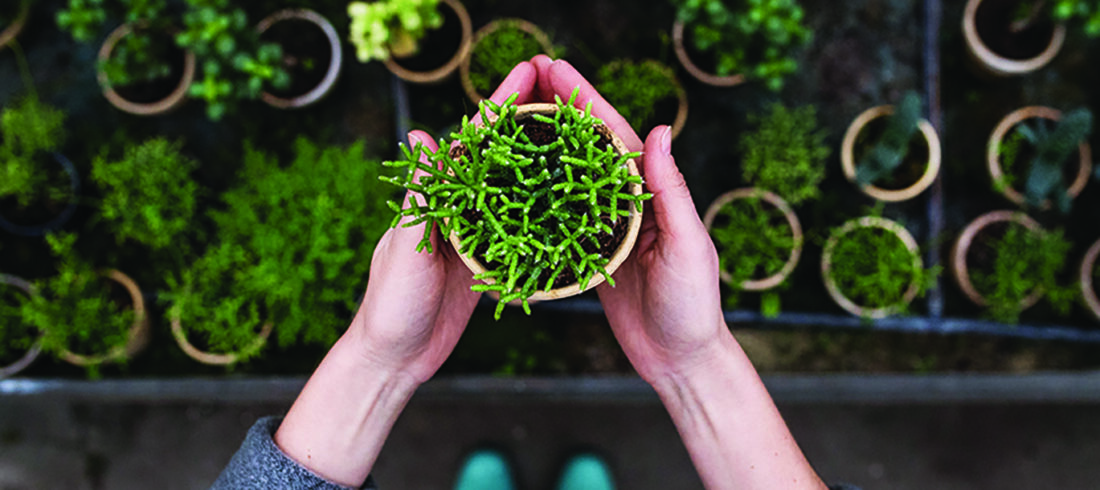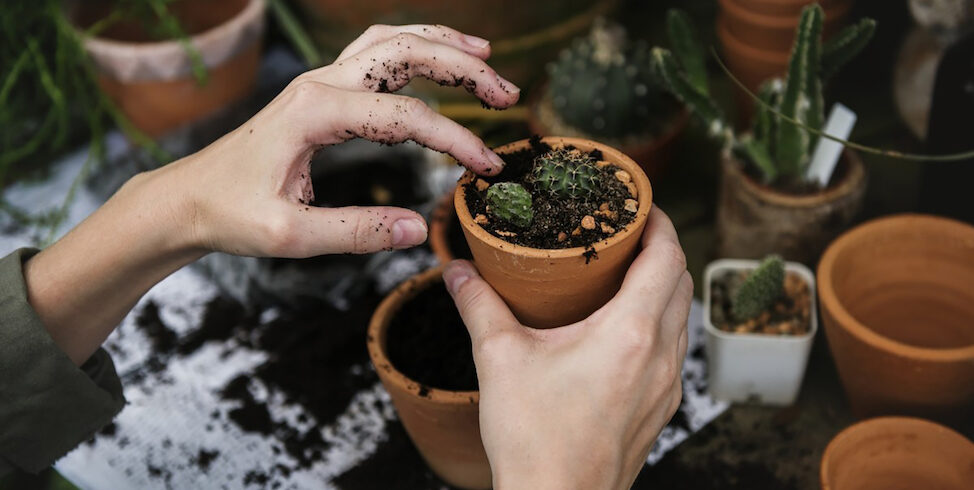Shopping for plants is so exciting that it’s easy to get carried away and forget to be choosy. All gardeners have found themselves holding a potted plant in each hand, not knowing which one to take home. Do you want the geranium that is short and full, or the tall and thin one? Here are some guidelines to keep in mind when visiting the nursery, the gardener’s favorite destination.

Gardeners generally get most excited by plants covered with flowers, but I suggest you choose the one that has lots of buds instead. Remember, what you are looking for is a plant with a healthy root system, not abundant foliage or blooms. Your research or the plant tag should give you an idea of the bloom color. By choosing the less-developed plant, you will be able to enjoy the process of watching it grow, eventually rewarding you with a beautiful show. An immature plant will suffer less shock when planted than a full-sized one, and your rewards will be more impressive.
At this time of year you are actually purchasing roots, not abundant blooms or foliage. Explore a plant’s root system before you decide to purchase it. Gently tap the side of the pot to release the plant. Examine the root ball in your hand. Roots should be white, crisp, and fresh, not black or mushy. If there are visible roots pushing out through the drain holes in the bottom of the pot, I immediately reject these root-bound specimens. Those plastic pots and six-pack containers are meant to house plants for just a short while during their development.
Plants without a label are a case of “missing identity,” and are best avoided. It is critical to know a plant’s correct name and growing requirements. Plant stakes offer important information such as common as well as Latin names, desired light levels, and soil and water needs. Why gamble on an unmarked plant?

Survey the array of plants before you. Dried out, yellow, wilted, or mottled foliage is a sign that the plant has been stressed and is not worth bringing home. Reject tall and leggy ones. If the plant on the shelf looks like it has been damaged during transit to the garden store, I am sure to leave it behind. After all, I am not planning to set up a plant hospital! Don’t automatically select plants placed front and center. Often the older stock is placed in front. I remind myself that I am searching for the healthiest and most vigorous plants.
As with any shopping trip, buying plants on impulse can be costly. I generally consider myself frugal, but when buying plants things can easily get out of control. Compose your shopping list at home in the garden, as you stroll around visualizing your dreams for the peak of the season. Browse garden catalogs and magazines for plant suggestions. Once in the nursery, I resolve to firmly stick to the shopping list in hand with the vision of my garden clearly in mind, despite all those intriguing plants calling my name.
More and more these days, you see boxed summer bulbs and perennials for sale in spring: hostas, dahlias, day lilies, and clematis, to name a few. They are usually less expensive at this time. I recommend you examine the container closely to make sure the plant has not sprouted out of its space. In its search for light and nutrition, it can be already stressed and won’t have the vigor it should.
Shop thoughtfully and with care. Your garden deserves no less than the best.


